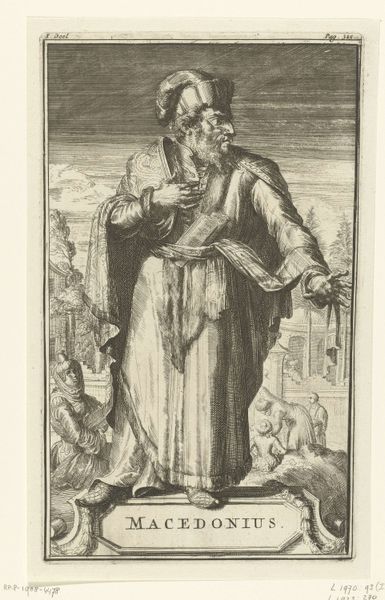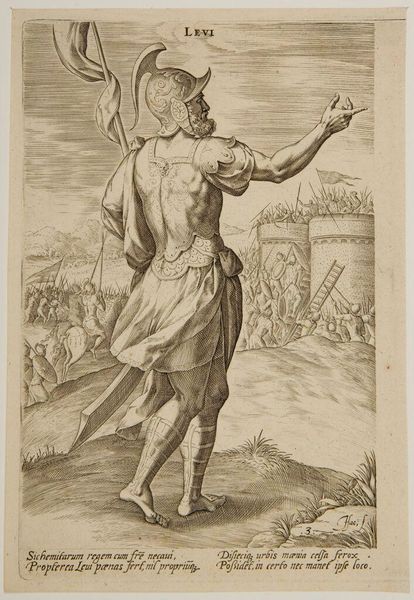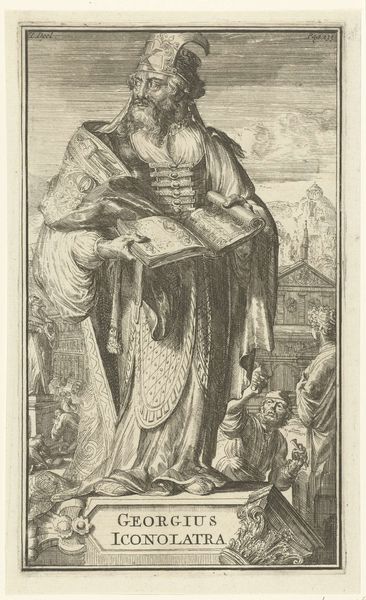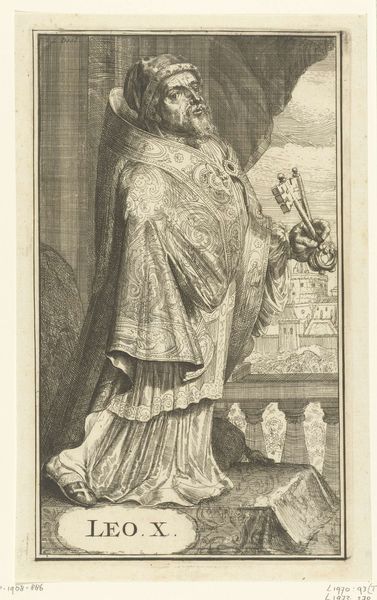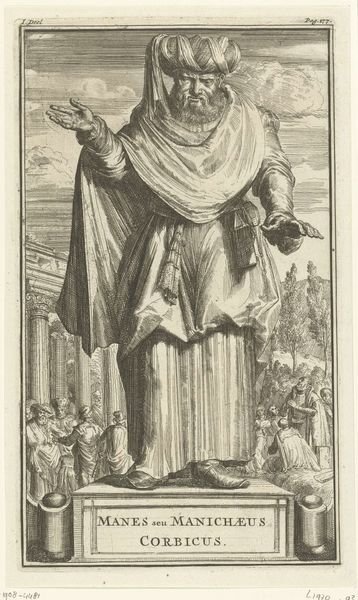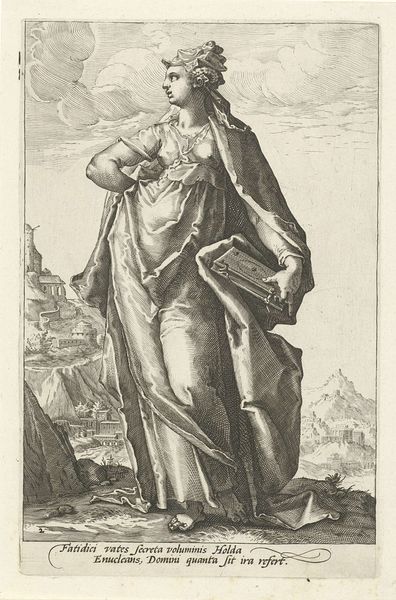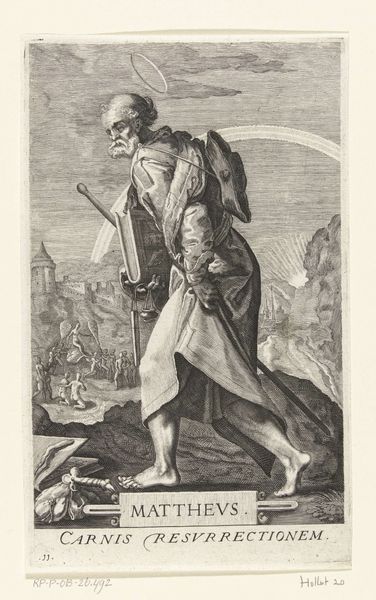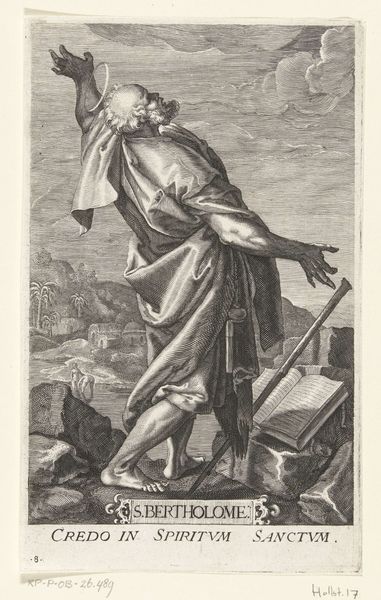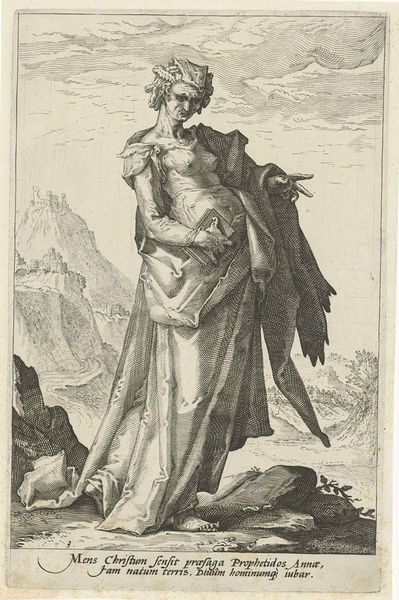
engraving
#
portrait
#
baroque
#
pen illustration
#
caricature
#
figuration
#
line
#
history-painting
#
engraving
Dimensions: height 266 mm, width 157 mm
Copyright: Rijks Museum: Open Domain
Editor: Here we have Romeyn de Hooghe’s “Portrait of Nestorius,” created around 1701 using engraving. I'm immediately struck by how the dramatic lighting emphasizes Nestorius's gesture, while chaos unfolds behind him. What is your perspective on this baroque work? Curator: From a formalist lens, I find the stark contrasts compelling. The artist meticulously manipulates light and shadow using fine, deliberate lines. This use of line serves not only to define form, but also to create a sense of movement. Notice how the architectural elements in the background—the domed structure—are rendered with the same attention to detail as Nestorius himself. How does this linearity contribute to the overall composition in your view? Editor: It almost feels like everything, including the chaos, is tightly controlled. The linearity provides this incredible sense of texture that's also very architectural. Curator: Precisely. Moreover, examine the ornate details of Nestorius's vestments. These intricate patterns contrast with the relative simplicity of the background sky, which results in compositional balance. The directional force established through Nestorius's hand and the receding perspective further accentuates spatial depth. What might one infer from such meticulous rendering? Editor: It sounds like no element is accidental; all have specific purpose. This artwork shows me just how crucial structure is in creating tension, especially using detailed lines and the manipulation of contrast between foreground and background. Curator: Indeed, a comprehensive reading of the aesthetic is integral in the explication of de Hooghe’s work.
Comments
No comments
Be the first to comment and join the conversation on the ultimate creative platform.

